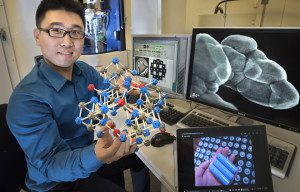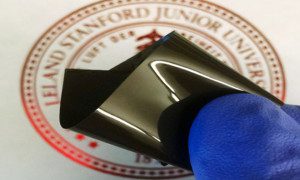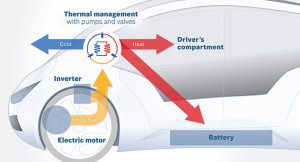As the search for a better battery grinds on, a lot of the attention is focused on potential cathode materials. Nickel is one possibility that shows a lot of promise – its drawback is that it is unstable and tends to have destructive reactions with the electrolyte. Now a team of scientists from the Brookhaven… Read more »
Search Results Found For: "NANO ONE"
New material shuts down batteries at high temperatures and restarts when it cools
Stanford researchers have invented a new technology that could eliminate thermal runaway in high-energy-density batteries. Thermal runaway refers to a chain reaction in which an increase in temperature causes further increases in temperature and uncontrollable release of energy. In “Fast and reversible thermoresponsive polymer switching materials for safer batteries,” published in Nature Energy, Professor Zhenan Bao and… Read more »
European researchers: Our new Li-sulfur battery is more energy-dense, cheaper and safer
EU-funded researchers in the LISSEN (Lithium Sulfur Superbattery Exploiting Nanotechnology) project have developed a new lithium-sulfur battery that uses lithiated silicon as the anode and a nanostructured sulfur-carbon composite as the cathode. The team says its battery offers an energy density at least three times higher than that of current lithium battery technology, as well… Read more »
Tesla tweaks its battery chemistry: a closer look at silicon anode development
In mid-July, Tesla Motors made a trio of Model S update announcements. The new options included a 70 kWh rear-wheel-drive base model, an upgrade for the high-end battery pack from 85 to 90 kWh (providing about a 6% increase in range), and Ludicrous mode, which offers a 10% improvement in the car’s 0 to 60… Read more »
Bosch: Our new EV heat pump system can increase range by up to 25%
Heating and cooling an EV presents a special challenge, as battery power must be used for climate control, which can significantly reduce range. Automakers and researchers around the world are working on a range of alternative solutions. Nissan and Volkswagen both use heat pumps in their EVs. The JOSPEL project, a consortium of organizations from… Read more »
Samsung says it can immediately double capacity of Li-ion batteries
Samsung Electronics has developed a silicon carbide-free graphene coating that it says could immediately double the capacity of lithium-ion batteries. That would be an impressive feat indeed, considering that capacity has increased only twofold since Li-ion batteries were first commercialized in 1991. Many researchers are investigating the potential of silicon as an anode material, but… Read more »
ORNL breakthrough could enable wider application of graphene composites
Graphene, a two-dimensional hexagonal lattice of carbon atoms, has great potential in a number of EV-related applications, including anodes, lithium-sulfur batteries and ultracapacitors. With current technology, however, it’s impractical to use on a large scale, and researchers have been limited to using small flakes of the material. Now a team of researchers at the DOE’s… Read more »
New imaging technique displays the advantages of iron fluoride batteries
“Iron fluoride has the potential to triple the amount of energy a conventional lithium-ion battery can store,” says Song Jin, a Professor of Chemistry at the University of Wisconsin-Madison. “However, we have yet to tap its true potential.” Jin and his colleagues have been using a novel X-ray imaging technique to visualize and study the… Read more »
Stanford team improves potential of solid-state electrolytes by enhancing ionic conductivity
Solid-state electrolytes’ potential advantages in energy density and safety compared with conventional liquid electrolytes have made them the hottest topic in the battery world. However, there are several challenges to be overcome, including the low mobility of lithium ions in solid electrolytes. Now, a team of Stanford researchers have used ceramic nanowire fillers to enhance… Read more »
Researchers discover new high-performance cathode material for lithium-sulfur batteries
Lithium-sulfur batteries are one of the hottest topics in the battery field today, as they could theoretically offer energy density up to four times higher than that of lithium-ion batteries. However, one of several challenges to be overcome is finding cathode materials that demonstrate long-term stability. An international team of researchers from Drexel University and… Read more »











